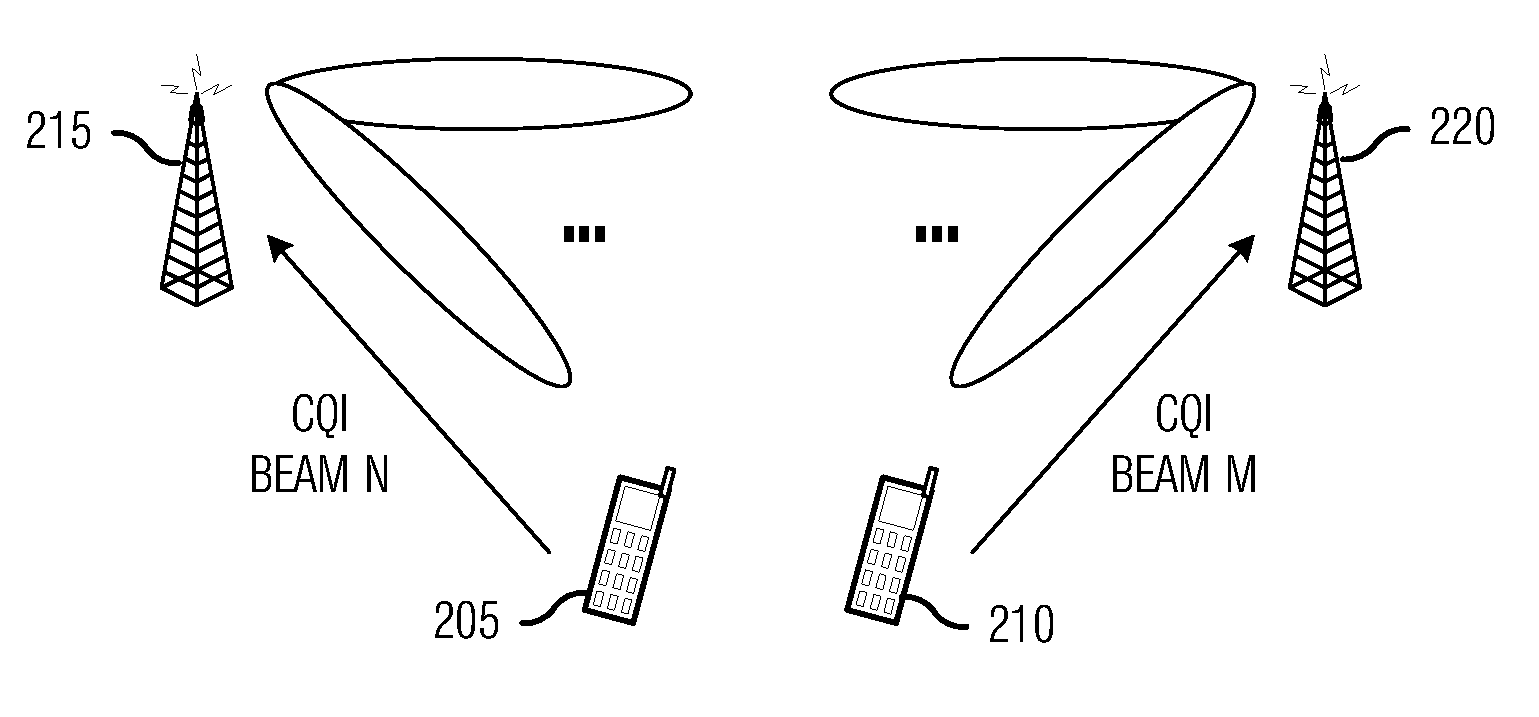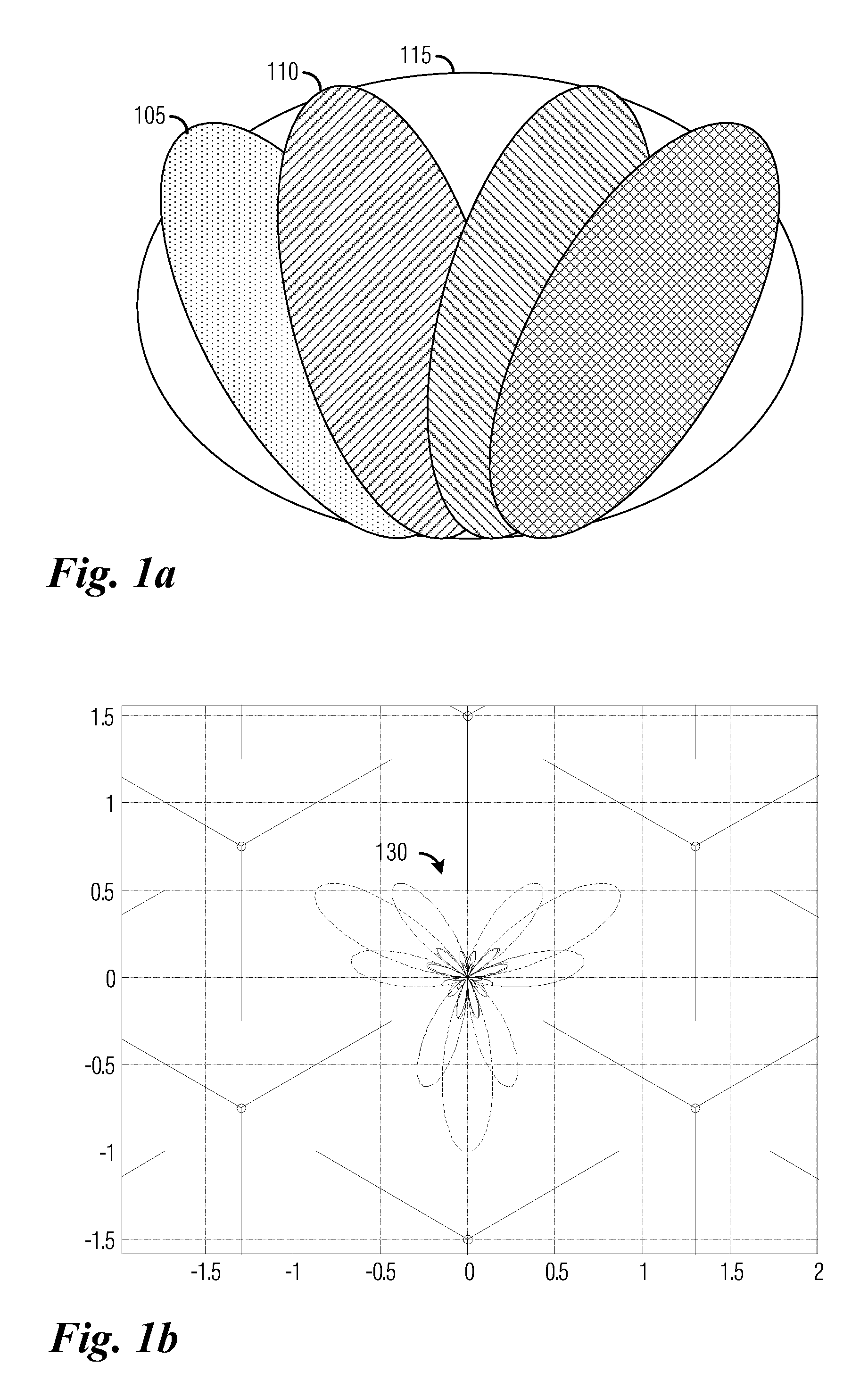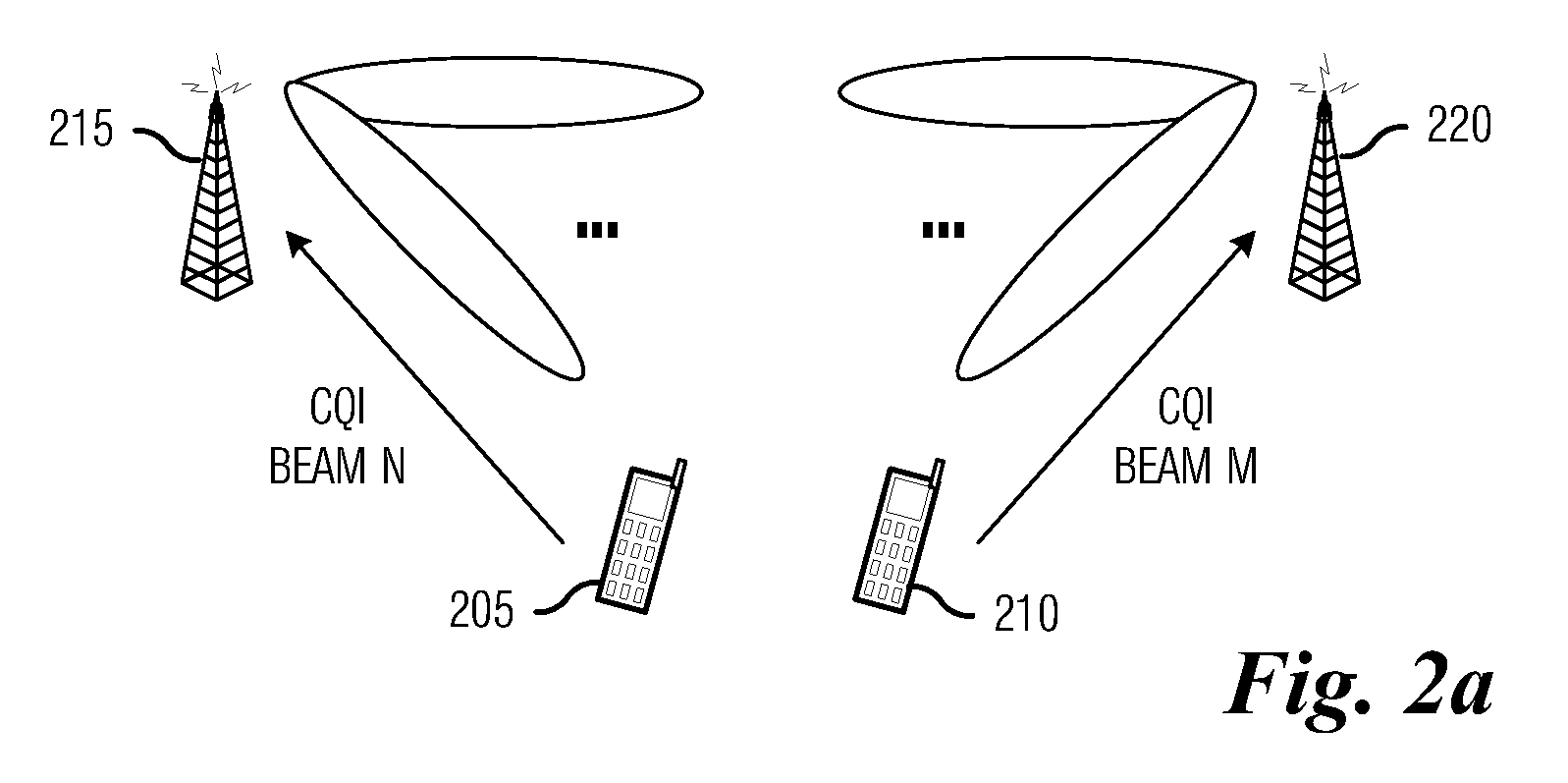System and method for coordinating electronic devices in a wireless communications system
a wireless communication system and wireless communication technology, applied in the field of wireless communication, can solve the problems of channel quality change, interference increase, etc., and achieve the effect of maximizing multi-user diversity, small overhead of control signaling and reference signal, and small impact on overall performance of the communications system
- Summary
- Abstract
- Description
- Claims
- Application Information
AI Technical Summary
Benefits of technology
Problems solved by technology
Method used
Image
Examples
second embodiment
[0119]PMI CQI (All): Strict Coordinated beamforming where the NB has to adhere to the beam cycle pattern. The UE feeds back all CQI's for all subbands, delayed by 2 ms.[0120]PMI CQI (Group): Flexible Coordinated beamforming where the NB has some flexibility to trade of multi user diversity gain vs. flashlight effect, as described in [13]. The UE feeds back all CQI's for all subbands, delayed by 2 ms.
third embodiment
[0121]Cycle CQI (All CQI): Coordinated beamforming. The UE feeds back all CQI's for all subbands, delayed by 2 ms. Note the overall optimal performance.[0122]Cycle CQI (Best CQI): Coordinated beamforming The UE feeds back only the CQI's for the best beams subbands, delayed by 2 ms.
[0123]Additional performance evaluations are performed to evaluate the performance when using coordinated techniques under different traffic loads. In these evaluations, a coordinated eNB cluster as described before is again implemented. In these simulations the Reference LTE averages the reported CQI in order to limit the packet error rate. In fact if the CQI is not averaged, the performance degrades with increasing loads due to the increased flashlight effect under heavy loads. The Coordinated techniques do not need to average the CQI's since the flashlight effect is already contained. Here, one additional form of coordination was included, where the eNB has to choose between a strict coordination (Metho...
PUM
 Login to View More
Login to View More Abstract
Description
Claims
Application Information
 Login to View More
Login to View More - R&D
- Intellectual Property
- Life Sciences
- Materials
- Tech Scout
- Unparalleled Data Quality
- Higher Quality Content
- 60% Fewer Hallucinations
Browse by: Latest US Patents, China's latest patents, Technical Efficacy Thesaurus, Application Domain, Technology Topic, Popular Technical Reports.
© 2025 PatSnap. All rights reserved.Legal|Privacy policy|Modern Slavery Act Transparency Statement|Sitemap|About US| Contact US: help@patsnap.com



